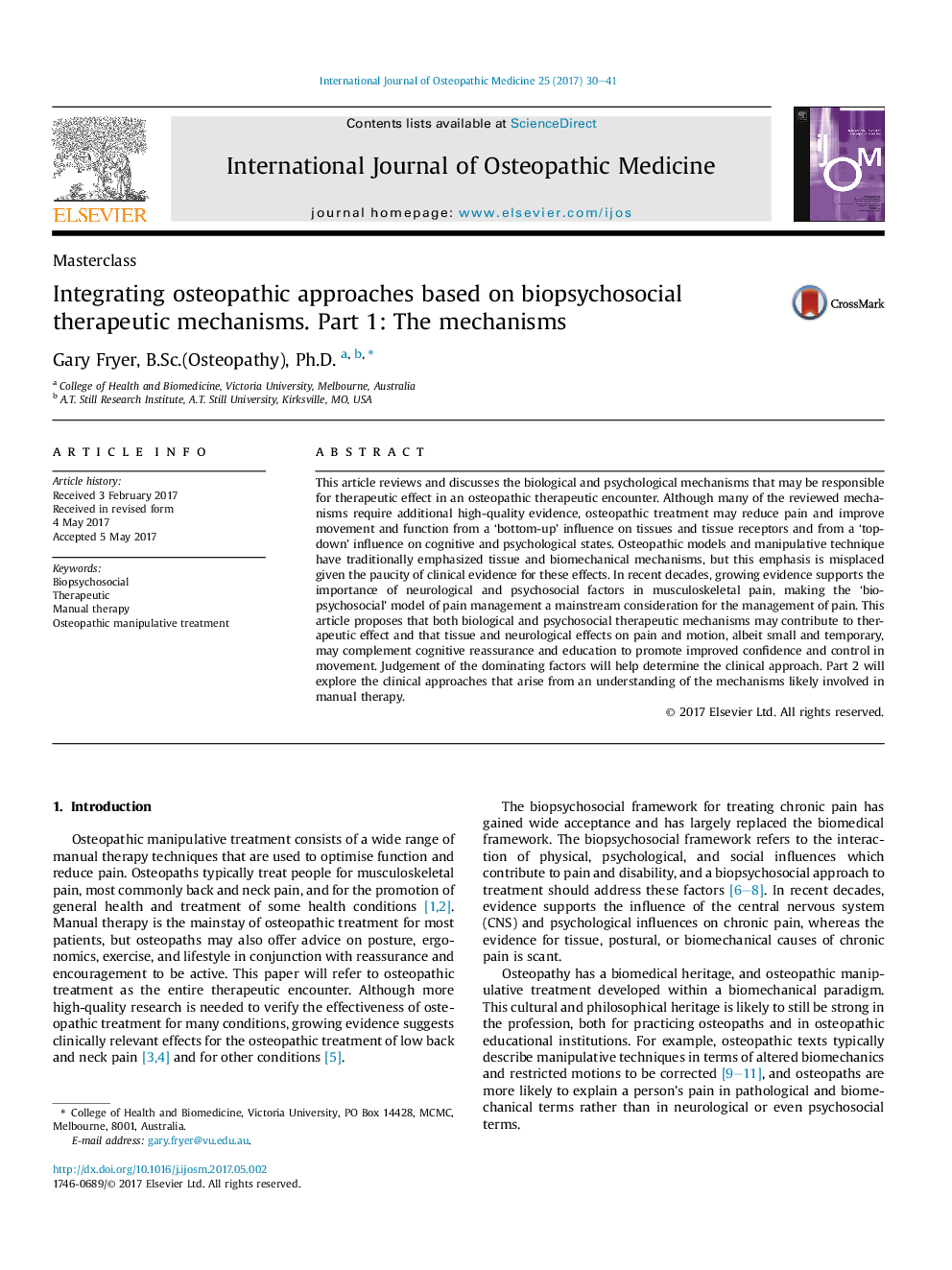| Article ID | Journal | Published Year | Pages | File Type |
|---|---|---|---|---|
| 5563869 | International Journal of Osteopathic Medicine | 2017 | 12 Pages |
Abstract
This article reviews and discusses the biological and psychological mechanisms that may be responsible for therapeutic effect in an osteopathic therapeutic encounter. Although many of the reviewed mechanisms require additional high-quality evidence, osteopathic treatment may reduce pain and improve movement and function from a 'bottom-up' influence on tissues and tissue receptors and from a 'top-down' influence on cognitive and psychological states. Osteopathic models and manipulative technique have traditionally emphasized tissue and biomechanical mechanisms, but this emphasis is misplaced given the paucity of clinical evidence for these effects. In recent decades, growing evidence supports the importance of neurological and psychosocial factors in musculoskeletal pain, making the 'biopsychosocial' model of pain management a mainstream consideration for the management of pain. This article proposes that both biological and psychosocial therapeutic mechanisms may contribute to therapeutic effect and that tissue and neurological effects on pain and motion, albeit small and temporary, may complement cognitive reassurance and education to promote improved confidence and control in movement. Judgement of the dominating factors will help determine the clinical approach. Part 2 will explore the clinical approaches that arise from an understanding of the mechanisms likely involved in manual therapy.
Related Topics
Health Sciences
Medicine and Dentistry
Complementary and Alternative Medicine
Authors
Gary B.Sc.(Osteopathy), Ph.D.,
